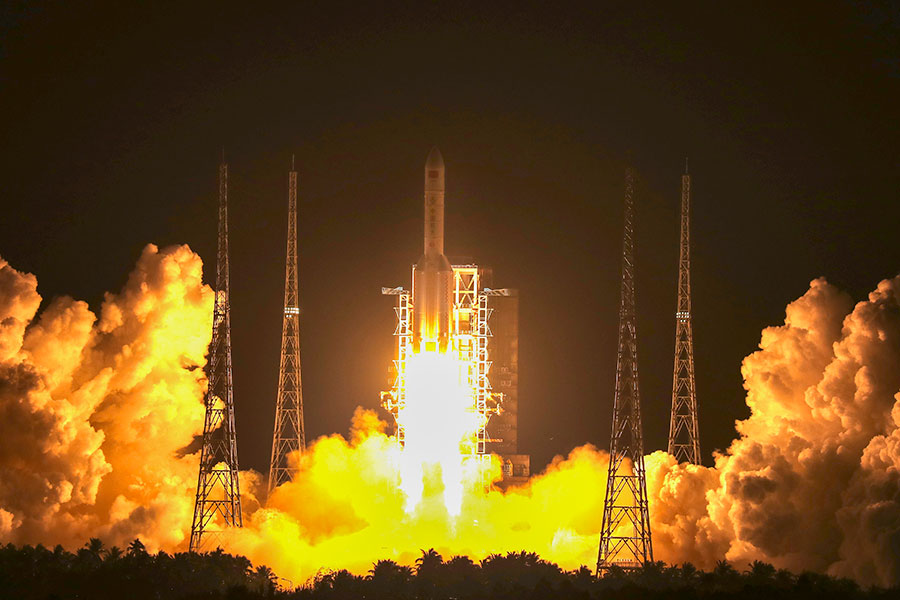
A Long March-5 rocket carrying China's heaviest satellite lifts off on Dec 27, 2019, in Wenchang, Hainan province. (Photo: China Daily)
BEIJING, Jan. 5 (Xinhua) -- China's heaviest and most advanced satellite, Shijian-20, reached its fixed position in geosynchronous orbit Sunday, marking the first successful flight of DFH-5 satellite platform, according to the China Aerospace Science and Technology Corporation.
The Shijian-20 satellite is the first verification satellite for DFH-5 satellite platform, China's new generation of large geosynchronous orbit satellite platform.
At present, the satellite has completed the orbit transfer and verified the key technologies of the DFH-5 satellite platform, according to Li Feng, chief designer of the satellite.
The Shijian-20 satellite was launched into space by the third Long March-5 rocket, China's largest carrier rocket on Dec. 27, 2019. It has carried out orbit experiments for a series of key technologies.
Shijian-20 has the largest solar wings among all China's satellites, with the total wingspan 10 meters wider than that of a Boeing 737 aircraft. The solar wings has unfolded twice, and the increased solar wing area will supply the satellite with abundant power.
Compared with the DFH-3 and DFH-4 satellite platforms, the DFH-5 satellite platform has improved in weight, power and in-orbit lifespan, which will serve the needs of high-capacity satellites in the next 20 years, said Zhou Zhicheng, chief engineer of the DFH-5 satellite platform.


